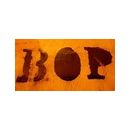Wallander Instruments acaba de lanzar la actualización a la versión 2.0 de NotePerformer para Sibelius, la librería orquestal especializada en este editor de partituras.
Lista de novedades de la versión:
La más interesante es la posibilidad de crear secciones de sonido diferenciado mediante el texto a2, a3, hasta a8 utilizando el controlador MIDI CC #104
http://www.noteperformer.com/?mode=news
Lista de novedades de la versión:
La más interesante es la posibilidad de crear secciones de sonido diferenciado mediante el texto a2, a3, hasta a8 utilizando el controlador MIDI CC #104
http://www.noteperformer.com/?mode=news
NotePerformer escribió:
- Great sound quality and timbre improvements for ALL instruments. The existing sound library has essentially been rebuilt from scratch in order to achieve higher clarity and distinction, and a more open sound.
- Solo strings have been completely reworked. Improved tuning!
- More realistic and more distinct legato transitions.
- New and improved reverb and early reflections algorithms.
- Greater dynamic range for brass instruments, and many of the woodwinds. Accents and marcato can now reach beyond FFF, for notes where it's applicable.
- Note timing and pitch algoritms have been improved, allowing psychoacoustic note separation without spoiling the musical context and beat.
- Note-to-note volume and tone differences for woodwinds and brass has been greatly improved upon (make sure Espressivo is turned off).
- Electric organ sounds were added. Use the "Electric organ", "Rock organ" and "Percussive organ" staves in Sibelius.
- Rainstick percussion sound was added.
- Strings no longer play vibrato on the lowest open string (the lowest note on the instrument) as this isn't physically possible.
- Beltree percussion sound was added. It requires manual mapping to a note head on a percussion staff, because this instrument doesn't have its own staff in Sibelius.
- Recorder sounds were replaced with samples instead of synthesis.
- Harmonica sound was added.
- Significant performance optimizations.
- Fixed issue with the NotePerfomer splash screen on OS X, where it did not always display correctly.
- Improved dynamic level consistency.
- "poco vibrato" technique is now possible, if one manually adds a dicionary entry for this mapping to the +vibrato.light sound ID. But there is now also full vibrato control over MIDI CC (see further down) which makes this somewhat redundant.
- Hi-hat, triangle and guiro sounds are now mutually exclusive as recommended by the General MIDI standard (e.g. a ringing hi-hat sound is automatically choked by a closed hi-hat note).
- Pipe organ now responds to dynamic changes.
- Doits, shakes and falls bugs have been fixed. They should now trigger for the correct note also in Sibelus 7.5 and more recent versions of Sibelius.
- Overriding base tuning, e.g. 440 Hz, is now possible using MIDI CC #102 (advanced feature, please see documentation on how to use).
- Custom pipe organ registration is now possible using MIDI CC #103 (highly advanced feature, please see documentation on how to use).
- One can now create custom sections, e.g. a2, a3, up to a8, using MIDI CC #104, as a workaround for not being able to support this as a technique in Sibelius (advanced feature, please see documentation on how to use).
- Vibrato amount can now be controlled by the user using MIDI CC #105 (advanced feature, please see documentation on how to use).
- NotePerformer's timing now more closely matches that of General MIDI, when mixing sounds from both sets.
- Polyphonic harmonics are now supported, when using artificial harmonics notation (e.g. four written notes producing two pitches, six written notes producing three pitches, etc.).
- Lots and lots (and lots) of minor playback bugs or discrepancies have been corrected and improved upon, and general musical interpretation has been extended with new additions and tweaks.

![{] ∞Ω∞ [}™](https://users.soniccdn.com/images/130/67110_cmf0z.jpg)





